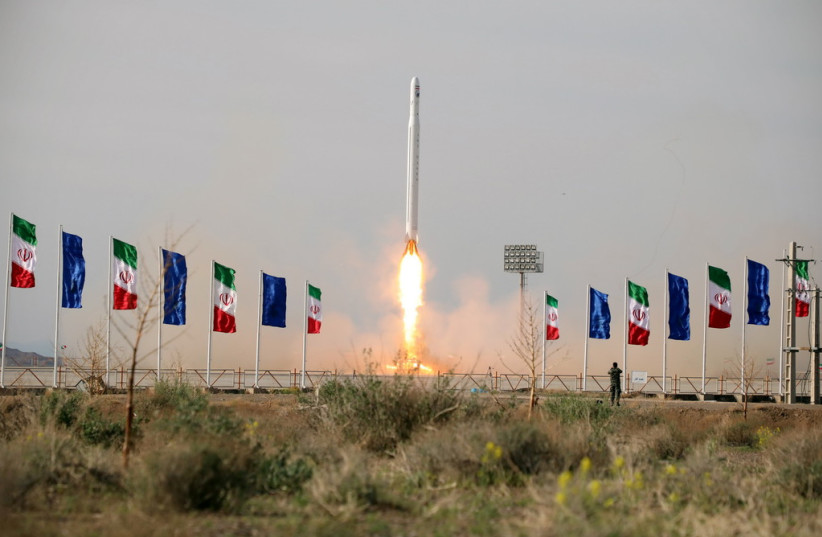How significant is the latest Iranian space exploration development for the threat that its nuclear program could pose?
As usual with Iranian space launches, complex questions come to bear about whether there could be dual-use technology involved which could lead to advances in the Islamic Republic’s nuclear weapons program.
Until now, most of the focus has been on whether Tehran could weaponize enough uranium for a nuclear bomb.
But another key element for nuclear weapons is the ability to deliver or fire the weapon at a target.
Iran for decades has had ballistic missiles that could hit Israel, Saudi Arabia, and even Eastern Europe with conventional warheads, but has not been able to deliver nuclear warheads on these missiles.

It also could not fire missiles that could reach Western Europe, let alone the US.
So what did it do on Wednesday?
According to Iranian media, Tehran sent up a rocket with a test living in a space capsule on Wednesday as the country presses on with its long-time plans to send astronauts into space.
Iran’s announcement came 10 years after a prior announcement that it had sent two live monkeys into space and returned them to Earth safely.
The report said that the capsule reached an altitude of 130 kilometers.
The human exploration side of Iran’s space launches has been less advanced until now, evidenced by the 10-year gap between announcements.
In contrast, just in September, Iran’s Islamic Revolutionary Guard Corps (IRGC) successfully launched a third satellite into low orbit over only a few years.
The satellite was the third version of the imaging satellite Noor, which means “light” in Persian.
Noor-3 was reportedly placed in an orbit 450 km. above Earth.
Like the earlier two Noor satellite launches, it used a Qased – meaning “messenger” – a carrier developed by the IRGC.
The earlier two launches were in April 2020 and early 2022.
A third track started in August 2022, when an Iranian-owned and Russian-built satellite – presented as having the capability to take high-resolution photos – was successfully launched by some mixed Russian-Iranian project from Kazakhstan.
The problem with all three of these tracks, including Wednesday’s launch toward sending astronauts into space, is that often the same technologies used to send a rocket into space could be used to launch an intercontinental ballistic missile (ICBM) into space.
For an ICBM to reach the US from Iran it would need to succeed at launching into space and to handle re-entry into the earth’s atmosphere.
If Iran is to succeed at sending astronauts into space, it will have to accomplish both of those skills.
While some Iranian officials claim there is no connection between satellite and space exploration launches and improving capabilities to deliver nuclear weapons, others have sometimes indirectly confirmed military links to the ostensibly civilian programs.
Also, some markings on some of the items used for such launches and some of the specific rockets and other technologies used are known to have potential dual-use.
All of this takes place when Iran has enriched enough uranium for potentially seven nuclear bombs, according to Defense Minister Yoav Gallant, and when many critical IAEA nuclear inspectors have been kicked out of the country, when many IAEA surveillance cameras have been removed, and when the world is distracted by the Israel-Hamas War.
By press time, neither Israel nor the US had responded.
This is not because they have not responded in the past and declared such launches threats, but rather it seems that they do not want to draw attention to their lack of a response when their hands are full with Gaza.
The next question is will the Islamic Republic take the lack of a reaction as an invitation to press forward faster?
